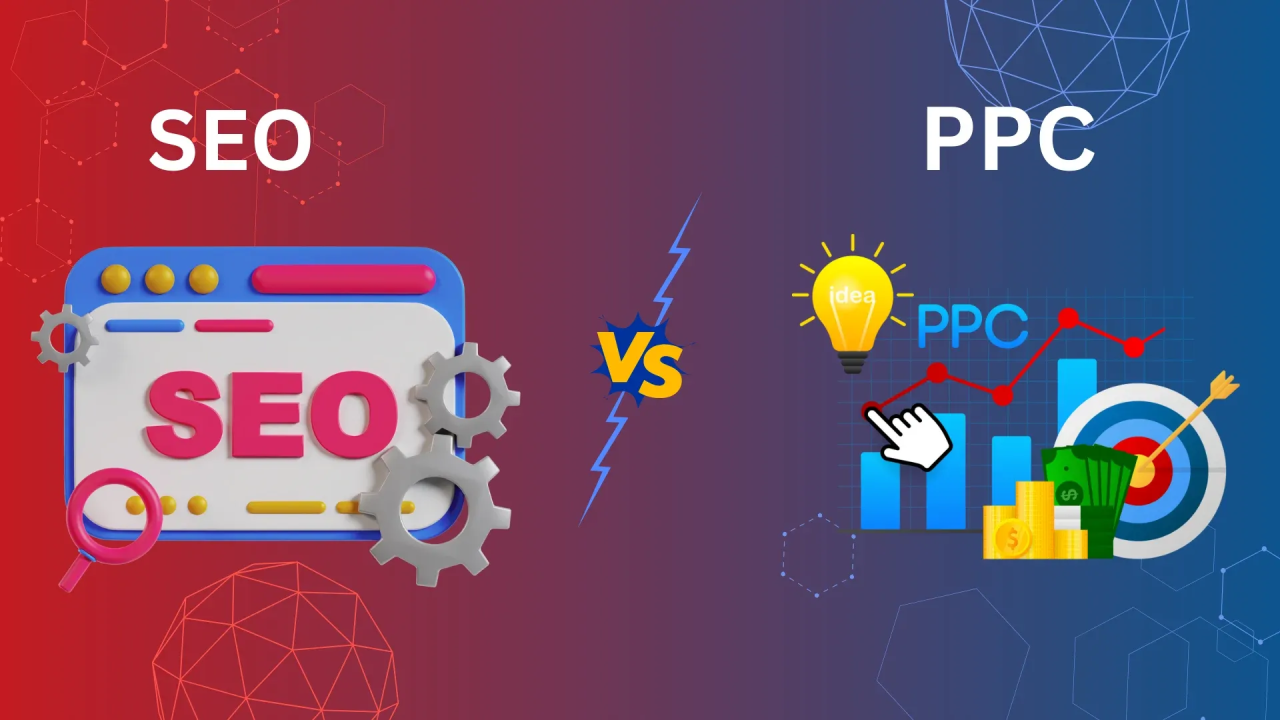In today’s fast-moving digital landscape, small and medium-sized businesses in the US, UK, and Australia face a constant challenge: how to attract the right audience online without overspending. Two of the most powerful digital marketing strategies are Search Engine Optimization (SEO) and Pay-Per-Click advertising (PPC).
Both can drive traffic, leads, and sales—but they work very differently. As we enter 2025, many business owners are asking the same question: Which strategy is best for my business—SEO or PPC?
The answer isn’t one-size-fits-all. Let’s break it down in detail so you can make the right choice for your business.
What Is SEO?
SEO (Search Engine Optimization) is the process of improving your website so it ranks higher on search engines like Google, Bing, and Yahoo. The higher you rank, the more organic (free) traffic you get.
Some common SEO strategies include:
- Optimizing website content with the right keywords
- Improving website speed and mobile-friendliness
- Building high-quality backlinks
- Creating valuable blog posts, guides, and resources
For example, a café in Sydney might optimize for “best coffee shop in Sydney,” while a law firm in New York may target “top immigration lawyer in NYC.”
What Is PPC?
PPC (Pay-Per-Click advertising) is a paid marketing method where you bid on keywords, and your ad appears at the top of search results. You only pay when someone clicks your ad. The most popular PPC platforms are Google Ads and Microsoft Ads.
For instance, a clothing store in London could run a PPC campaign targeting “buy women’s dresses online UK.” Their ad would show up instantly when someone searches for that keyword.
SEO in 2025: Why It Still Matters
In 2025, SEO remains one of the most sustainable long-term strategies for businesses. Here’s why:
- Cost-Effective in the Long Run – While SEO takes time to show results, once you start ranking, traffic comes in without paying for every click.
- Builds Trust and Credibility – People often trust organic results more than paid ads. A business ranking on page one of Google naturally looks more reliable.
- Local SEO Advantages – For small businesses in the US, UK, and Australia, local SEO helps you show up in “near me” searches (like “plumber near me” or “best dentist in Melbourne”).
- Content is King – In 2025, helpful content is even more critical. Businesses that regularly create blogs, videos, and guides gain a long-term edge.
PPC in 2025: Why It’s Still Powerful
Even with rising ad costs, PPC is far from dead. In fact, it’s more powerful than ever—if used strategically.
- Instant Results – Unlike SEO, which takes months, PPC ads can bring traffic to your site within hours. Perfect for new businesses or time-sensitive campaigns.
- Highly Targeted – You can target by location, age, interests, and even device. For example, a restaurant in Chicago can target ads only to people within 10 miles searching for “best Italian food near me.”
- Flexible Budgeting – Whether you want to spend $10 a day or $10,000, PPC allows full budget control.
- Great for Testing – PPC is a fantastic way to test keywords, headlines, or offers before investing in long-term SEO campaigns.
SEO vs PPC: Side-by-Side Comparison
| Factor | SEO (Search Engine Optimization) | PPC (Pay-Per-Click Advertising) |
| Cost | Higher upfront effort, low ongoing cost | Ongoing cost per click |
| Speed of Results | Slow (3–6 months) | Instant (same day) |
| Trust Factor | Users trust organic results more | Ads sometimes ignored |
| Scalability | Scales naturally with effort | Scales with budget |
| Best For | Long-term growth & credibility | Quick results & short-term goals |
Which Strategy Works Best in 2025?
The real answer: both SEO and PPC have their place. The best choice depends on your goals, budget, and timeline.
When SEO is Better:
- You want long-term growth without paying for every click.
- You run a local business (like cafés, salons, or dentists in the US, UK, or Australia) and want to rank for local searches.
- You want to build credibility and authority in your industry.
When PPC is Better:
- You need immediate traffic—for example, launching a new product in London or a limited-time service in Melbourne.
- You want to target a specific audience quickly.
- You’re okay with ongoing ad spend to keep traffic flowing.
The Smartest Strategy: Combine SEO + PPC
In 2025, the smartest small businesses don’t choose between SEO and PPC—they combine them.
- Use PPC to get fast results and test what keywords, offers, or services work best.
- Use SEO to build a strong, long-term online presence and reduce reliance on paid ads.
For example:
- A US-based e-commerce store could run Google Ads for “buy shoes online USA” while also optimizing blog posts around “how to choose the best running shoes.”
- A UK law firm could pay for ads targeting “personal injury lawyer London” while also ranking organically for “legal advice after a car accident.”
- An Australian gym might use PPC for seasonal promotions (“New Year fitness memberships Sydney”) while building long-term organic content around “best fitness tips Australia.”
By combining both, you cover short-term and long-term growth—ensuring your business thrives no matter how search engines evolve.
Final Thoughts
In 2025, both SEO and PPC remain vital digital marketing strategies. The right choice depends on your goals: if you want sustainable growth and long-term visibility, SEO is the winner. If you need quick results and highly targeted traffic, PPC is your go-to.
But the most powerful approach is a hybrid strategy. Small businesses in the US, UK, and Australia can see the best results by blending SEO’s trust and long-term impact with PPC’s speed and precision.
In today’s competitive digital world, it’s not about choosing one—it’s about knowing how to use both together.

